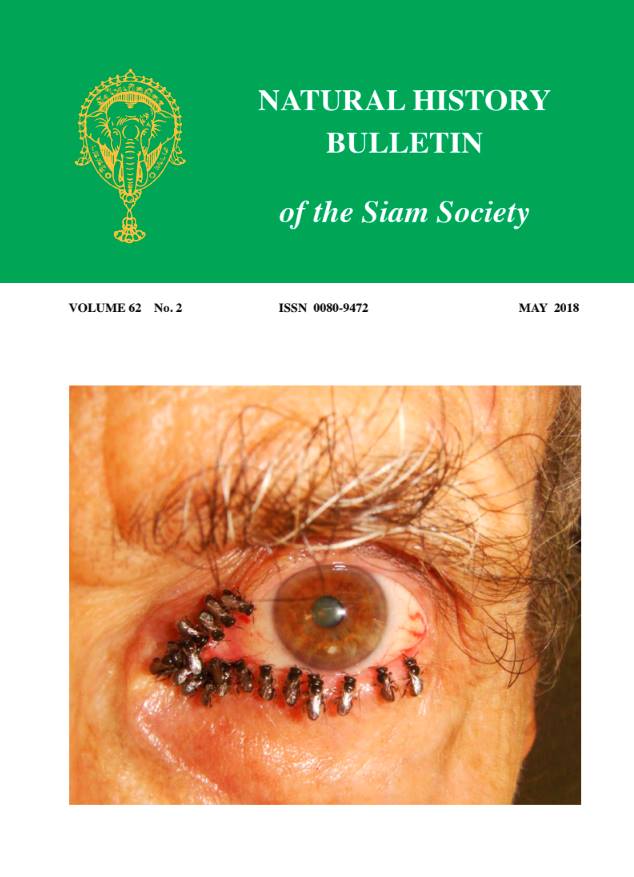Congregations of Tear Drinking Bees at Human Eyes: Foraging Strategies for an Invaluable Resource by Lisotrigona in Thailand (Apidae, Meliponini)
Main Article Content
Abstract
Wild Lisotrigona cacciae (Nurse) and L. furva Engel were studied in their natural forest habitat at three sites in northern Thailand, May 2013–November 2014. The author, both experimenter and tear source, marked the minute bees while they drank from his eyes viewed in a mirror. All marked workers, 34 L. cacciae and 23 L. furva, came repeatedly to engorge, 34 and 27 times on average, respectively. The maximum number of times the same L. cacciae and L. furva came was 78 and 144 visits in one day, respectively; the maximum over two days was 145 visits by one L. cacciae; the maximum number of visiting days by the same bee was four over seven days by one L. furva which made 65 visits totally. The same forager may collect tears for more than 10 h in a day, on average for 3 h 15 min and 2 h 14 min for L. cacciae and L. furva, respectively. Engorging from the inner eye corner averaged 3.1 and 2.2 min, respectively, but only 1.3 and 0.9 min when settled on the lower eye lid/ciliae. The interval between consecutive visits averaged 3.3 min and 3.8 min, respectively. Lachryphagy occurred during all months of the year, with 91–320 foragers a day during the hot season and 6–280 foragers during the rainy season; tear collecting resumed after a downpour. During the cold season eye visitation was reduced to 3–64 foragers, but none left her nest when the temperature was below 22°C. Flying ranges were greater than in comparable non-lachryphagous meliponines. It is proposed that Lisotrigona colonies have workers that are, besides nectar and pollen foragers, specialized tear collectors. Tears are 200 times richer in proteins than sweat, a secretion well-known to be imbibed by many meliponines. Digestion of proteins dissolved in tears is not hampered by an exine wall as in pollen, and they have bactericidal properties. These data corroborate the inference that Lisotrigona, which also visit other mammals, birds and reptiles, harvest lachrymation mainly for its content of proteins rather than only for salt and water.


